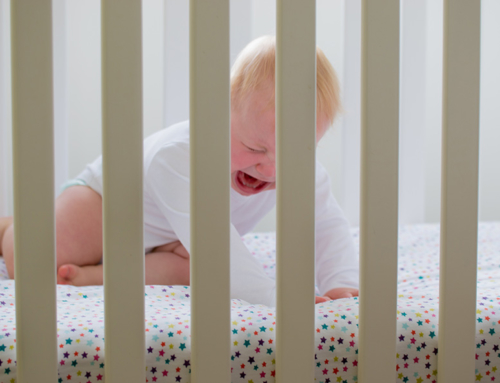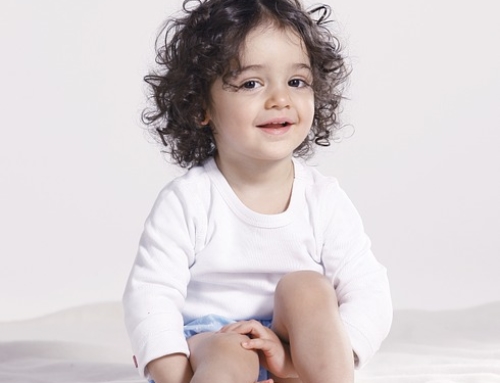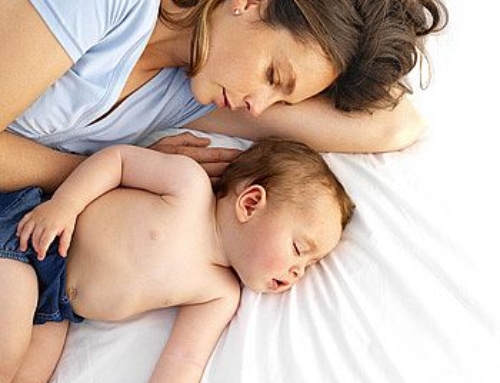 One of the sleep struggles that many parents face in the second year of life has to do with later bedtimes and shorter overall nighttime sleep. Parents start to worry when their babies are fighting the usual bedtime and then waking at 4 or 5am. What was working well in the first year suddenly stops. When this happens, parents are bombarded with information about how important sleep is and how they need to take drastic measures to ensure their children are getting this sleep. Most parents are told to do one or more of the following:
One of the sleep struggles that many parents face in the second year of life has to do with later bedtimes and shorter overall nighttime sleep. Parents start to worry when their babies are fighting the usual bedtime and then waking at 4 or 5am. What was working well in the first year suddenly stops. When this happens, parents are bombarded with information about how important sleep is and how they need to take drastic measures to ensure their children are getting this sleep. Most parents are told to do one or more of the following:
- Crying-it-out. Often we hear the recommendation to CIO as being a part of parenting an infant, but it can also be used (and is often recommended) with toddlers as well.
- Controlled crying. Same as above, this is often recommended for toddlers as well.
- Stay-in-bed lights. Clocks that tell children when they can get out of bed are recommended so children stay in bed (and presumably sleep?) for as long as you think is necessary.
- Hall passes. Kids get one pass for the entire night and once they use it they have to stay in bed.
These methods may “work” for a period, but what are they telling our toddlers? We aren’t listening to what you’re communicating and we’re telling you what you need to be doing from a biological perspective. These are not respectful and certainly don’t address the issue of what might be happening with your individual child.
Instead of these methods, I first recommend families take a step back and look at their individual child and his or her needs. The first question is always
How much sleep does my child need?
Each child is different and there is wide variability in what kids need to thrive. Some youngsters require 14 or 15 hours in a 24 hour period whereas others are just fine with 10 in the same time frame. Indeed, one systematic review of studies looking at the average amount of sleep in a 24-hour period of toddler/preschoolers had a range of 9.9 to 13.8 hours
You may want to argue that we have numbers that represent how much sleep children need and if they don’t get it, we know there are problems. This would be false. In one review of the history of sleep recommendations for children, it was found that there is (a) a lack of empirical evidence associated with any recommendations, and (b) the recommendations are always more than what children are, on average, getting[2]. Combine this with the fact that a recent study looking to find what negative outcomes occurred when children (albeit somewhat older kids) didn’t hit that recommended number and instead of finding negative consequences across the board, found that there was no relationship between number of hours slept and behavioural or other problems[3]. Another study found that there was an inverted U-shaped relationship between sleep and well-being in children aged 5 and 9, with children getting too little or too much reporting higher behavioural problems and lower levels of physical health[4]. Of course, there is no way to know if these are causal relationships or if sleep is actually just another manifestation of the problems that are identified.
Given that there isn’t a magical number that all children should hit, what has happened?
One of the possible problems, as I see it, is that as most children’s daytime sleep is not reducing as we would expect. As such, their nighttime sleep is taking the reduction in its place. Compounding this problem is that we often underestimate the change in sleep that happens and expect our toddlers to need more than they do. Imagine that you believe your toddler requires 13 hours of sleep. She is getting 2-3 hours of sleep a day in naps which would leave – in your mind – 10-11 hours of sleep at night. Except what if she’s one that falls more towards 11 hours a day of sleep? Now those 2-3 hours of nap mean she’s only going to need 8-9 hours of sleep at night. If you manage to get her down for sleep at 8pm then that means she’ll be ready for the day around 4 to 5am. Lovely, eh?
Of course, most people here struggle with early bedtimes as well and that’s no surprise either. Naps reduce the sleep pressure that is needed for our bodies to fall asleep at night. If your child has a long nap, he is unlikely to be ready for sleep for quite a long time, longer than you might expect, and this results in a lot of bedtime resistance or struggles to fall asleep. Then you face more night wakings as young children who go to sleep before they are biologically ready often wake more and have more restless sleep than those who go to sleep when biologically ready[5]. This can help explain the bedtime battles many families face.
What do you do?
The answer is to first look at your child’s behaviours. Do you have a happy child during the day who engages with the world and is meeting milestones? If so, chances are your child is not sleep-deprived (if they are struggling in multiple areas, I recommend seeking the advice of someone you trust in this regard; gentle changes can help, contrary to what many will tell you – I have worked with families who have faced this and seen improvement). In this case, you need to consider how much sleep your child is getting and then think of that as normal. If you look at this number as what you will be aiming for in a 24-hour period, then you can look at what is happening for naps and what bedtime and wake time you are expecting. There are many ways in which families work to address discrepancies between what children actually need and what you expect, and it often involves a variety of changes. It may include any of the following:
- Reduction in naptimes
- Later bedtimes
- Earlier wake times
These are not changes that should be made by force, though, and you’ll need to accept some periods of transition as you work to meet your child’s actual sleep needs, but this is doable and will often result in better sleep for everyone.
—–
[1]Galland BC, Taylor BJ, Elder DE, Herbison P. Normal sleep patterns in infants and children: a systematic review of observational studies. Sleep Medicine Reviews 2012; 16: 213-22. [2]Mattriciani LA, Olds TS, Blunden S, Rigney G, Williams MT. Never enough sleep: a brief history of sleep recommendations in children. Pediatrics 2012; 129: 2011-39. [3]Price AMH, Quach J, Wake M, Bittman M, Hiscock H. Cross-sectional sleep thresholds for optimal health and well-being in Australian 4-9-year-olds. Sleep Medicine 2016; 22: 83-90. [4]James S, Hale L. Sleep duration and child wellbeing: a nonlinear association. J Clin Child Adolesc Psychol 2017; 46: 258-68. [5]LeBourgeois MK, Wright Jr, KP, LeBourgeois HB, Jenni OG. Dissonance between parent-selected bedtimes and young children’s circadian physiology influences nighttime settling difficulties. Mind Brain Education 2013; 7: 234-42.





It’s really a great post. I have a six months little baby and she has sleep trouble. So, I am much worried about her. I hope your tips is rally helpful for me. So, thanks a lot for sharing it.
This post is like a breath of fresh air. I have one of those kids that just seems to need less sleep than most. She has been on the low end of those sleep ranges from the beginning and as a two-year old, it’s still like that. The first few pediatrician appointment I had with her as a newborn, I would ask the doctor what I could do differently, when this would change, etc. He would always say the same thing. That she is fine, happy healthy, nothing is wrong, she just needs less sleep. So this was definitely a case of managing my expectations. I’ve been working at letting go of some of the energy I put towards hoping she will get more sleep. It does neither of us much good. Reading posts like this does help.
So interesting! We try to follow our 13 month olds cues for sleep but a lately a late day nap (she is pushing her second nap later and later) that we think she wants is leading to a bedtime later than our own! Curious how you would recommend reducing naps? We currently never wake her from naps…
I am fortunate to be working from home and have access to all the wonderful information in your articles. As a result my now 6yo daughter still cosleeps with me (my husband in another room) and we’ve had none of the sleep problems I hear/read others complain about.
I discovered your website when she was only a few months old and we were struggling with sleep and NONE of us were really getting enough. We learned about safe bedsharing and twilight nursing and it was a game changer! Almost immediately we were all sleeping better. We still had the usual ups and downs with teething and growth spurts but overall just soooo much better.
We let her give up naps and we followed her lead on bedtime. Don’t get me wrong we resisted at first but only briefly each time because each time we quickly realized we made ALL of our lives easier that way. I get that work and school schedules can muck this up for a lot of families. We were fortunate it was simple to adjust our schedule to suit her biological needs rather than trying to her biological needs to fit our schedule.
These days my girl is super independent and assertive, outgoing and fun-loving but at night time she still just wants Mom. We tried a few “tricks” over the years to convince her to sleep on her own. Offering rewards, buying a new fun bed, etc. But as is true of most rewards.., the moment the offer to reward the behavior disappeared or was too distant or not motivating enough to overcome the desire to just have what she truly wanted (sleeping with Mom) so did the desired behavior (sleeping in her own bed).
So it took some time to accept this may be how our family’s sleep looks until she is 7,8,9, 10yo (mostly because of people offering unwanted advice and opinion). I’m just glad I can still come to this site and see the empirically supported information that I’m not crazy and this does make sense. That it is the world that has gone mad not me. ?
Thank you, I’m struggling with my 25 mo old’s sleep. We’ve tried consistent bedtime routine, limiting nap to 2 hrs, but nothing has really helped. She’s up later than I think I good (10pm) & then I wake her for the day by 6:30am (I work full-time). But for all the frustration I’m wondering if she just needs a later bedtime & less sleep than I assume. Some days she’s exhausted & asleep by 8 but that’s not the norm.
How is her behaviour during the day?